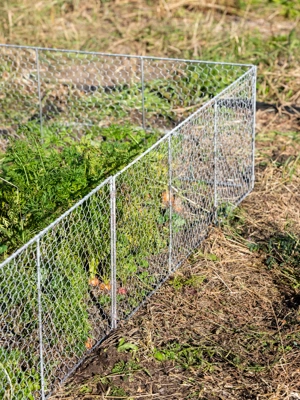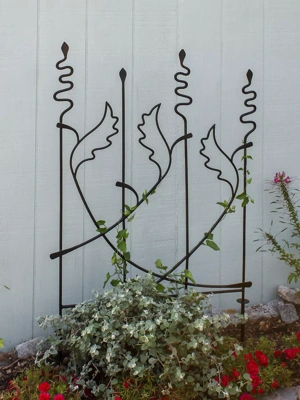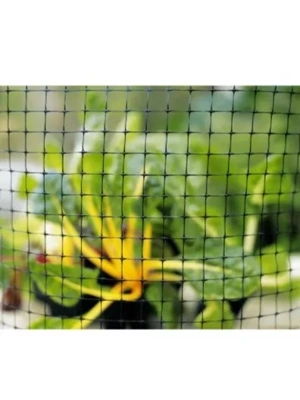Garden Fencing for Animal Pests
 Solid fences ensure that animals can't see what they're missing.
Solid fences ensure that animals can't see what they're missing.
Fencing is a safe and easy way to keep wild and domestic animals out of a prized garden. Here are some of our fence facts:
- Fences work best when the animal doesn't know what it's protecting. A hungry animal that knows food is available will try harder to get through any fence. Solid fences provide a visual block so they don't know what they're missing.
- Check municipal or county regulations before you build. Installation of a large, permanent fence may need to comply with zoning conditions or require a permit.
- Build the fence to fit the animal. Deer can easily leap over a 4-foot tall fence, while moles will head underground. By understanding the animal, you can choose the right fence for the job.
Deer
Deer are probably tops on the list of many homeowners. Because deer can jump, the fence needs to be constructed tall (8-10 feet) and set at a 45-degree angle at the top. It will make them think twice about jumping. Keep the fence snug to the ground, because deer can also wiggle under fences.
Our favorite fence for deer: The 4-foot x 8-foot Crop Cage is completely enclosed at the top, providing the ultimate protection for your garden veggies and berry bushes.
Cats and Dogs
Build a wire mesh fence at least 3 feet in height and anchored with sturdy posts. Cats probably won't climb over, and most dogs can't knock it over. Bend the base of the fence outward to form a 2-foot wide apron along the ground to discourage dogs from digging under it.
Our favorite fence for dogs and cats: The Chicken Wire Fence With Gate is nearly 4 feet tall and constructed with sturdy galvanized posts, so your overenthusiastic dog won't bust through.
Rabbits
Exclude rabbits with fencing that is at least 2 feet tall and that has 1-inch diameter holes. To prevent them from digging under, bury an apron of chew-proof hardware netting several inches deep.
Our favorite fence for rabbits: A Chicken Wire Cloche is perfect for protecting invidual plants and seedlings from nibbling rabbits. Have more than 1 plant? Our 3-in-1 Row Cloche will cover a whole garden row.
Tunneling Pests: Gophers, Chipmunks, Moles, etc.
These subterranean travelers have the advantage of being out of sight most of the time, and can do their dirty work of munching your plants undetected. In winter, they move beneath the snow and gnaw the bark off young tree trunks, and you often don’t discover the damage until spring. If your garden is plagued by any of these tunneling creatures, you can create cages or baskets to protect prized plants. Dig a 2- to 3-foot deep hole in the planting area and line the sides and bottom of the bed with wire mesh. Replace the soil and plant your garden.
Protect tree trunks with wire mesh guards placed a few inches below the soil line and 2 feet up the trunk. Check the guards in the spring and fall, adjusting them to make room for tree growth and to be sure they are securely fastened. More on gophers, chipmunks and moles.
Our favorite fence for tunneling pests: Chew-Proof Hardware Net is made of heavy-duty polyethylene that is super sturdy, yet easier to to bend than metal wire.
Birds
Any scare device will work for a few days, but birds are smart and will soon get used to it. The best way to prevent bird damage is through exclusion. Netting should be draped over fruit trees and berry bushes a few weeks before fruit ripens.
Our favorite fence for birds: Woven Bird Netting keeps birds out but still allows air to circulate and pollinating insects to fly in and out freely.
Last updated: 05/15/2024
Print this Article:
Related items
Get the Dirt
Stay up to date on new articles and advice. Please fill out the information below.











